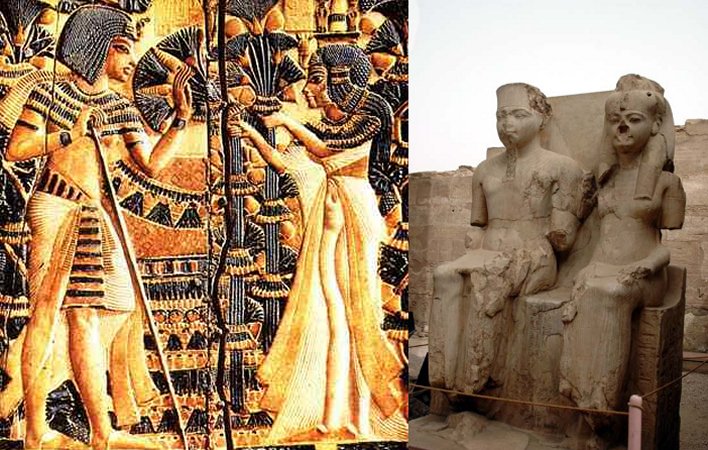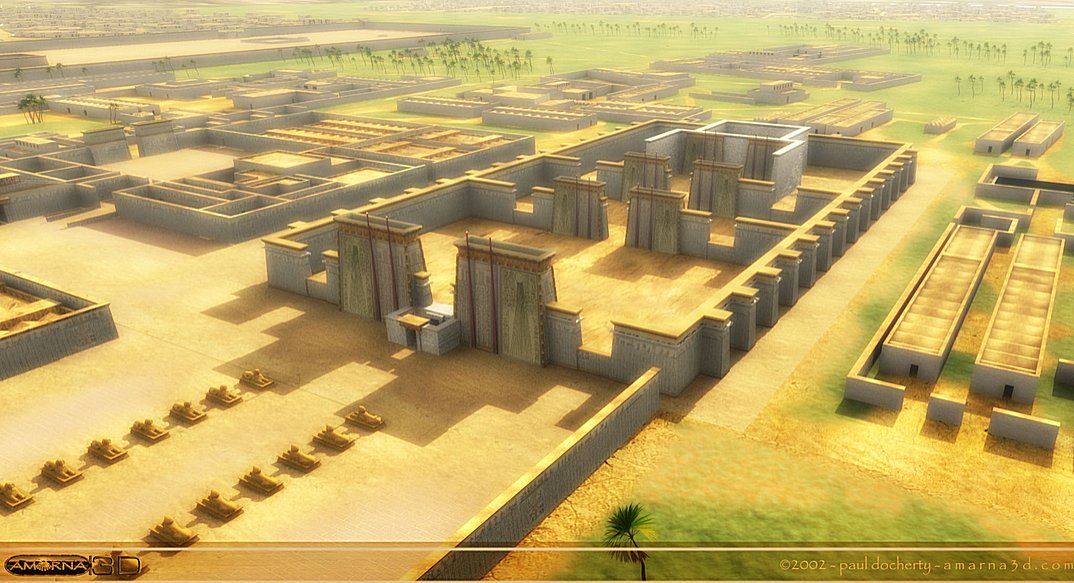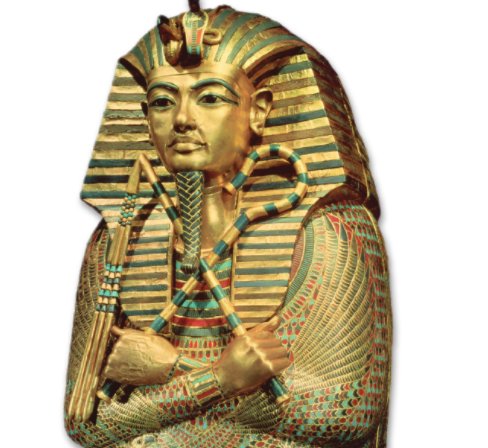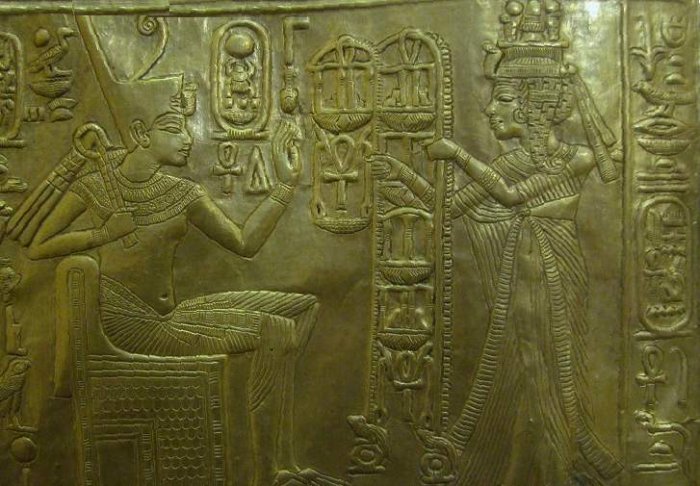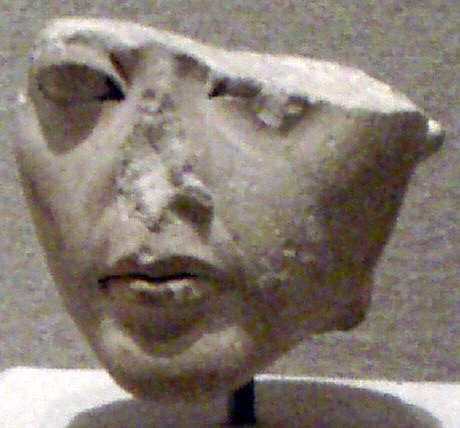Ankhesenamun – Mysterious Death Of Tutankhamun’s Wife Ended The True Amarna Bloodline
Ellen Lloyd - AncientPages.com - As a daughter of Egyptian queen Nefertiti and Akhenaten, one of the most famous rulers in the Land of Pharaohs, one would expect Ankhesenamun to enjoy a comfortable life.
Unfortunately, Ankhesenamun was born around 1348 B.C., during a troubled time period in the history of Egypt due to the unprecedented religious revolution in the country and her life was full of sorrow.
Historians are still trying to figure out what caused her mysterious death and why she vanished from historical records.
Left: Queen Ankhesenamun presents lotus flowers to Tutankhamun. From an ivory box from Tutankhamun's tomb. Right: Statues of Tutankhamun and Ankhesenamun. Credit: Wikimedia Commons
Who Was Ankhesenamun?
Born as Ankhesenpaaten, the young girl grew up in her father's new capital city of Akhetaten, present-day Amarna. She was the third of six known daughters of Pharaoh Akhenaten and his Great Royal Wife Nefertiti.
Pharaoh Akhenaten and Queen Nefertiti were both controversial individuals. They broke tradition and caused a religious revolution, in which they worshiped one god only, Aten, or the Sun Disc. Pharaoh Akhenaten eliminated all signs related to the Amun-Re cult. He withdrew funding from all temples of “false gods.” Taking money and power away from the very powerful and wealthy priestly class created chaos, discontent, and protests.
Pharaoh Akhenaten’s Tell el-Amarna (or simply Amarna) was the short-lived capital built by the ‘heretic’ Pharaoh Akhenaten and abandoned shortly after his death (c. 1332 BCE).
Reconstruction of Amarna and the Temple which was close to the Pharaoh’s quarters on the left. Credits: Paul Docherty Principal Lecturer in 3D CG Teesside University
Ankhesenpaaten’s name was later changed to Ankhesenamun. Her name means "She lives through Amun" (or "Living through Amun"). The change in her name reflects the changes in ancient Egyptian religion during her lifetime after her father's death.
Ankhesenamun Married Her Half-Brother Pharaoh Tutankhamun
Incest was common and not considered wrong in ancient Egypt. Egyptians believed that it was possible to preserve the royal bloodline by marrying a sister or daughter. It is believed that Ankhesenamun was first married to her own father Akhenaten. Some Egyptologists maintain that she was also married to Smenkhkare, a pharaoh who only reigned for one year. However, this claim is disputable because historians still don’t know whether Smenkhkare was male or female during the Amarna period.
Detail of the second coffin of Tutankhamun. Credit: Museum of Egyptian Antiquities, Cairo, Egypt.
After the death of Pharaoh Akhenaten, Ankhesenamun, who was only 13-year-old married her half-brother Pharaoh Tutankhamun. The couple appears to have had two miscarried daughters. The remains of their children were discovered in Tutankhamun’s tomb. One was no more than five months, and the other was between 7-8 months.
If these daughters had lived, they would eventually have taken the place of Queen Ankhesenamun, continued the Amarna bloodline, and changed the history of ancient Egypt. However, this did not happen, and life had more unpleasant surprises for poor Queen Ankhesenamun.
From the shrine of Tutankhamen's tomb. Credit: Wikimedia Commons
When Pharaoh Tutankhamun died at the age of 18, his wife found herself in a very difficult situation, surrounded by much older, ambitious men.
Queen Ankhesenamun’s Desperate Letter To The King Of The Hittites And The Murder Of Her Future Husband
Queen Ankhesenamun wanted to continue the royal bloodline of Amarna and wrote a desperate letter to Suppiluliumas I, the King of the Hittites. A copy of the letter was found during excavations at Hattusa in Turkey. She explained her situation, said that she had no sons, and asked the king if he could send her a husband to continue the royal bloodline.
Suppiluliumas I was suspicious and sent messengers to check her story. When he learned Queen Ankhesenamun had told him the truth, Suppiluliumas I sent Zannanza, a Hittite prince to Egypt to take up the queen’s offer. The Hittite prince did not even reach the border before he was murdered.
Queen Ankhesenamun ‘s Mysterious Death
Left without options, Ankhesenamun was now in the hands of those who decided her fate. Queen Ankhesenamun had to marry the late Pharaoh Tutankhamun’s advisor, Pharaoh Ay, a union she strongly opposed. Archaeologists have discovered a ring that shows she did marry Pharaoh Ay, but the strange aspect of this story is that she suddenly vanished shortly after.
Amarna era statuette head is thought to represent Ankhesenamun, sister, and wife to Tutankhamun. Credit: Keith Schengili-Roberts - Public Domain
Queen Ankhesenamun died under mysterious circumstances somewhere between 1325 B.C and 1321 B.C. Was she murdered by Pharaoh Ay, who was also responsible for the death of the Hittite prince Zannanza?
Equally puzzling is that on the walls of Pharaoh Ay's tomb, archaeologists found the name Tey, the wife of Ay and the wet nurse of Queen Nefertiti.
Queen Ankhesenamun’s name is not mentioned at all. It was as if she had been erased from history. Was it a deliberate act?
Has Queen Ankhesenamun’s Tomb Been Found?
The location of Ankhesenamun’s burial place has long been a historical mystery, but this may change soon. As Ancient Pages reported earlier, scientists announced in January 2018 that it's very possible her tomb is located somewhere in the Valley of the Kings near Luxor. Archaeologists have located a tomb, but it’s still uncertain who it belongs to.
If the remains of Ankhesenamun, Tutankhamun’s wife, can be found, Egyptologists may finally learn what happened to Egypt’s lost queen, whose life was full of misery.
Updated on September 8, 2023
Written by Ellen Lloyd – AncientPages.com
Copyright © AncientPages.com All rights reserved. This material may not be published, broadcast, rewritten or redistributed in whole or part without the express written permission of AncientPages.com
Expand for referencesMore From Ancient Pages
-
 Bonobos And Chimps: What Our Closest Relatives Tell Us About Humans
Featured Stories | Apr 6, 2023
Bonobos And Chimps: What Our Closest Relatives Tell Us About Humans
Featured Stories | Apr 6, 2023 -
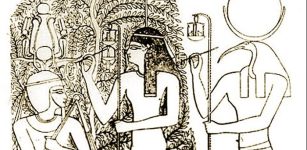 Heliopolis ‘Sun City’ Was One Of The Most Ancient Cities Of Egypt
Featured Stories | Oct 6, 2021
Heliopolis ‘Sun City’ Was One Of The Most Ancient Cities Of Egypt
Featured Stories | Oct 6, 2021 -
 Massive Well-Preserved Second Temple-Era Aqueduct Unearthed In Jerusalem
Archaeology | Aug 29, 2023
Massive Well-Preserved Second Temple-Era Aqueduct Unearthed In Jerusalem
Archaeology | Aug 29, 2023 -
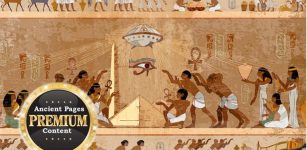 Knowledge Of Divine Alien Beings And High-Tech In Ancient Egypt Described In Sacred Books And Papyrus – The God Who Spoke About Time Dilation – Part 1
Featured Stories | May 12, 2021
Knowledge Of Divine Alien Beings And High-Tech In Ancient Egypt Described In Sacred Books And Papyrus – The God Who Spoke About Time Dilation – Part 1
Featured Stories | May 12, 2021 -
 Riddle Of The Indo-European Language – Which Of The Two Hypotheses Is Correct?
Featured Stories | Oct 25, 2023
Riddle Of The Indo-European Language – Which Of The Two Hypotheses Is Correct?
Featured Stories | Oct 25, 2023 -
 Why Is The History Of Striped Clothing Dark And Sinister?
Ancient History Facts | Jan 30, 2023
Why Is The History Of Striped Clothing Dark And Sinister?
Ancient History Facts | Jan 30, 2023 -
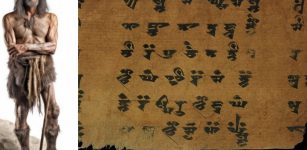 Ancient European Languages Shed Light On A Great Migration And Weather Vocabulary
Archaeology | Aug 14, 2023
Ancient European Languages Shed Light On A Great Migration And Weather Vocabulary
Archaeology | Aug 14, 2023 -
 Horrifying Flying Head That Terrorized The Iroquois
Featured Stories | Sep 17, 2019
Horrifying Flying Head That Terrorized The Iroquois
Featured Stories | Sep 17, 2019 -
 Secrets Of The Two Half Crescent Moons And The Serpent People
Featured Stories | Jan 23, 2020
Secrets Of The Two Half Crescent Moons And The Serpent People
Featured Stories | Jan 23, 2020 -
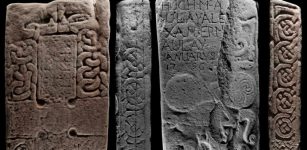 Rare Lost Pictish Stone With Strange Mythical Beasts Goes On Display For The First Time
Artifacts | Dec 12, 2020
Rare Lost Pictish Stone With Strange Mythical Beasts Goes On Display For The First Time
Artifacts | Dec 12, 2020 -
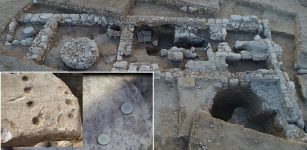 1,200-Year-Old Soap ‘Factory’ Unearthed In Beduin City Of Rahat In Israel
Archaeology | Aug 18, 2020
1,200-Year-Old Soap ‘Factory’ Unearthed In Beduin City Of Rahat In Israel
Archaeology | Aug 18, 2020 -
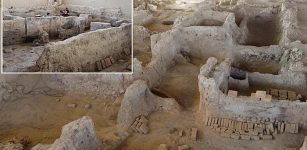 4,000-Year-Old Textile Mill Discovered At Beycesultan Mound In Western Turkey
Archaeology | Sep 25, 2020
4,000-Year-Old Textile Mill Discovered At Beycesultan Mound In Western Turkey
Archaeology | Sep 25, 2020 -
 Domovik: Household Spirit In Ancient Slavic Beliefs
Featured Stories | Apr 3, 2016
Domovik: Household Spirit In Ancient Slavic Beliefs
Featured Stories | Apr 3, 2016 -
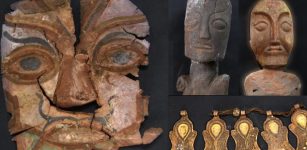 Golden And Silver Facial Ornaments, Wooden Figurines Among The Finds In Tomb Of Tibetan Plateau
Archaeology | Dec 28, 2020
Golden And Silver Facial Ornaments, Wooden Figurines Among The Finds In Tomb Of Tibetan Plateau
Archaeology | Dec 28, 2020 -
 Centuries-Old Authorship Mystery – Solved By Stanford Musicologist Jesse Rodin
Archaeology | Jul 18, 2022
Centuries-Old Authorship Mystery – Solved By Stanford Musicologist Jesse Rodin
Archaeology | Jul 18, 2022 -
 Was Tintagel Castle A Fortress Used By Iconic Hero King Arthur?
Featured Stories | Jul 12, 2022
Was Tintagel Castle A Fortress Used By Iconic Hero King Arthur?
Featured Stories | Jul 12, 2022 -
 Roman Leather Toy Mouse Found At Vindolanda
Archaeology | Jun 6, 2023
Roman Leather Toy Mouse Found At Vindolanda
Archaeology | Jun 6, 2023 -
 On This Day In History: Battle of Tsushima Was Fought – On May 27, 1905
News | May 27, 2016
On This Day In History: Battle of Tsushima Was Fought – On May 27, 1905
News | May 27, 2016 -
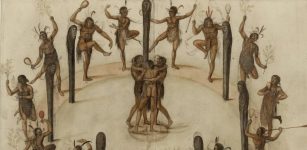 Archaeologists Have A Lot Of Dates Wrong For North American Indigenous History
Archaeology | May 4, 2020
Archaeologists Have A Lot Of Dates Wrong For North American Indigenous History
Archaeology | May 4, 2020 -
 Was Princess Tadukhipa Of The Mitanni Kingdom Queen Nefertiti?
Civilizations | Mar 15, 2016
Was Princess Tadukhipa Of The Mitanni Kingdom Queen Nefertiti?
Civilizations | Mar 15, 2016

